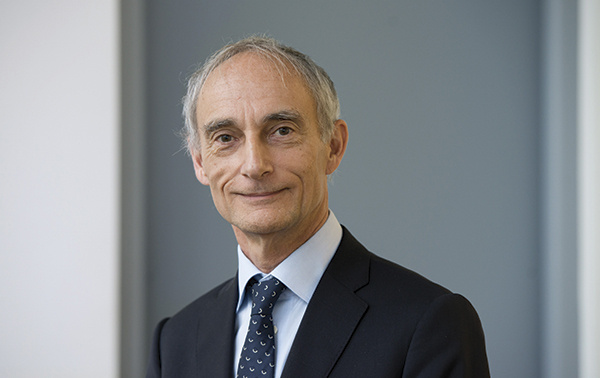Please allow me to introduce you to Wim and Ineke, a typical couple from The Netherlands, a densely populated, prosperous little country in Northern Europe. Wim is now 71; he worked as a teacher until he retired at 64. His wife was also a teacher but she stopped her career after the birth of her second child. Their son lives in Brussels and their daughter lives nearby with her husband and their one child. Like her husband, the daughter has a full-time job, so one day a week Wim and Ineke look after their granddaughter. Wim and Ineke bought their house forty years ago and more than half of the mortgage has been payed off. Wim has a good, pension and both he and Ineke receive a fixed pension from the Dutch government. Overall, the couple is pretty healthy, although Wim is a little overweight and takes pills for his high blood pressure and cholesterol. They like to go for long cycling rides and Ineke practices yoga twice a week.
Wim and Ineke are enjoying their lives, like so many of their fellow countrymen. Life satisfaction in The Netherlands is at a very stable average of around 7.8 out of 10. People over 65 years old score even higher: 8 out of 10. On the whole, people in The Netherlands are satisfied with their country and the direction of socio-economic changes. In this respect, there is no difference between seniors and other adults. Issues that do concern people include social cohesion, immigration and integration, and the economy. Yet nevertheless, when people are asked about the strengths of the country, social cohesion is often mentioned, as well as freedom, democracy, health care and education.
Wim and Ineke are baby boomers, and like in many other countries, the demography is changing now that the 2.4 million Dutch men and women born between 1946 and 1955 are reaching retirement ages. We are also living longer, men even more than women: life expectancy at birth is now 80 years for men and 83.4 years for women. As a result, the number of children (ages 0-14) compared to the adult population (ages 15-64) is 25 percent and decreasing, and the number of people aged 65-plus compared to the adult population is 28.4 percent and increasing. Almost one in five Dutch inhabitants is now over 65 years old.
In recent years, we have seen a sharp increase in the labor force participation rate of older adults; a key reason is that the government is gradually raising the pension age. The next generation will be in a different situation compared to Wim and Ineke. Retirement age is now set at 67 and in most families both partners have a substantial paid job. The pension systems in the Netherlands are also becoming increasingly strained at a rapid rate. Wim and Ineke spend a day a week babysitting their granddaughter and many hours doing volunteer work for their local community. Wim works at the village theatre, Ineke helps out at the nursing home where her own mother lives. Volunteer work is very common in the Netherlands: 9 out of 10 are active incidentally and about 30 per cent are active on a regular basis.
When reading all this, you could say we can’t complain. But it is in the Dutch nature to be critical and always look for better and smarter ways. And I believe there actually is room for improvement.
Let’s take health care, for example. The foundation of the current Dutch health care system was established around 1900 and expanded between 1950 and 1970. At that time, the Netherlands was very wealthy thanks to the discovery and exploitation of natural gas. An elaborate system of long-term care and welfare was developed by the government and paid for by public funding. This included older adult homes with independent apartments and the availability of nursing care, home care with housekeeping, and nursing homes. These nursing homes were rather medically oriented, with a doctor who had a nursing home specialty heading the facility. During the last decade this system became unsustainable and required fundamental reforms for two main reasons.

First of all, the natural gas supply has now dried up, while our health care costs came to be one of the highest in Europe. The Netherlands is currently spending over 13 percent of the total GDP on health care compared to, for instance, 9.4 percent in Finland. About half of the total health care budget is used for people older than 65. For this reason, all home arrangements for older people paid by public funding were stopped, the legislation governing home care changed and the entry criteria for nursing homes became more strict. We now see a shift from institutional care to home care. Meanwhile, home care has shifted from being a right provided by the government to a provision provided by local authorities.
The reform also has to do with expectations about quality of life. Because health care was organized from a neo-liberal perspective and centrally managed, we have a very normative system in place comprising regulations and control mechanisms. It is a very interesting time in long-term care, where the personal narrative values are emerging more and more and compete with normative frames in legislations, financial systems and control mechanisms which are not easy to dismiss. From the perspective of seniors , there is a clear demand for more individually tailored and person-centered care. Assertive baby boomers like Wim and Ineke will expect and accept nothing less.
Next to governmental changes in long-term care, there are many civilian initiatives across the country to develop new forms of cooperative housing combined with formal and informal care. Older people are building new networks: horizontally with friends and peers, and vertically with family members who are living nearby. People like Wim and Ineke are not going to wait and see what the government is organizing for them: they are actively shaping their own arrangements for when they become more frail and dependent.
Another important shift in health care is from curing to preventing ailments. Wim and Ineke cycle a lot, but Wim has spent his life sitting in classrooms most of the day. Unfortunately, most Dutch older adults do not reach the recommended level of 150 minutes of physical activity per week. There is growing attention being given to lifestyles related to healthy ageing. Many initiatives are emerging such as ‘lifestyle medicine’, governmental programs and local initiatives related to ‘blue zones’. In 2018, a covenant with all relevant stakeholders was signed to combat three particularly unhealthy lifestyles: smoking, high alcohol consumption and obesity. With a more active lifestyle, Wim may be able to cut down on his blood pressure and cholesterol pills.
“When reading all this, you could say we can’t complain. But it is in the Dutch nature to be critical and always look for better and smarter ways. And I believe there actually is room for improvement.”
Another area for improvement is housing. Many arrangements in the Netherlands are based on the principle that the family is the cornerstone of society, as it was fifty years ago. The social infrastructure, for instance related to housing, has not yet accommodated to the current situation. Also, there is a serious lack of housing with features adapted to the needs of older adults, often living alone; this is an issue that has only just started to draw political attention.
I have used Wim and Ineke as a fictional illustration for the Dutch elderly, but I can’t stress enough that the Dutch older couple or person does not exist. There are major differences among this group of individuals, and age really is but a number. For instance, there is a difference of 8 years in healthy life expectancy between high and low socio-economic status. About 22 percent of the current population has a non-Dutch background. What are the desires and ambitions of these demographic groups, as they grow older?
In a country with so much opportunity to live well and become very old gracefully with a good and accessible health care system, one of the major challenges is disparity between groups. On average we are doing very well but the differences in life expectancy and well-being are increasing between the poor and rich, the high and low educated, and immigrants and native citizens. I hope the caring democracy and solidarity in the Netherlands will be strong enough to overcome those challenges. ◆

Joris Slaets
Professor of Geriatric Medicine Director of Leyden Academy on Vitality and Ageing